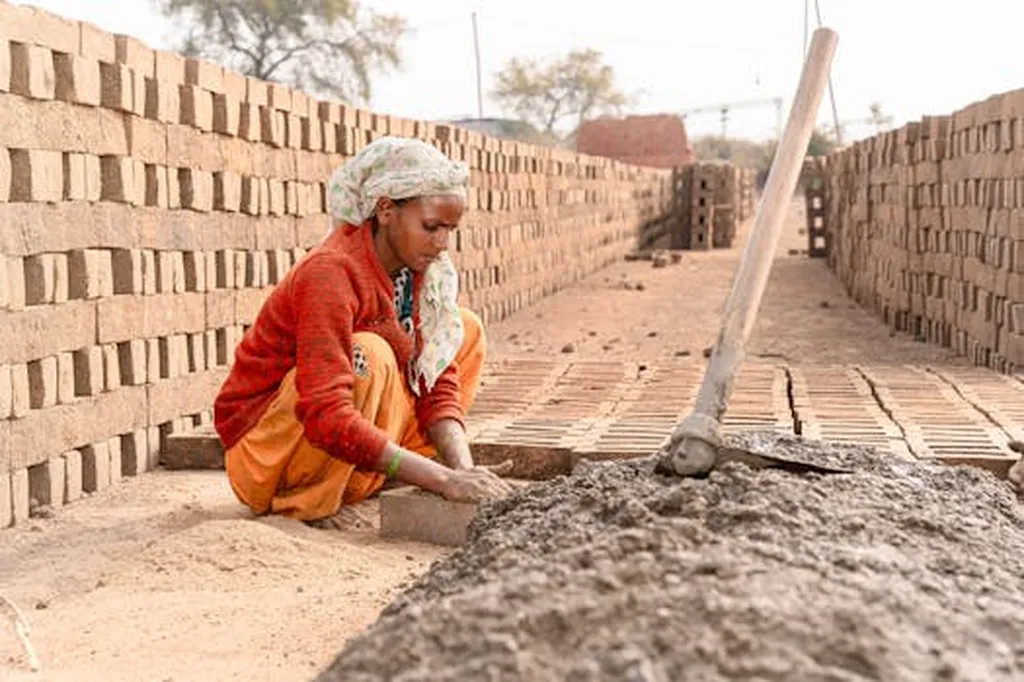In a significant stride towards sustainable construction materials, researchers have developed a high-performance, flame-retardant composite that could revolutionize industries from automotive to consumer products. The innovation, led by Aqil Ahmed J. of the Department of Mechanical Engineering at P.S.R. Engineering College in Tamil Nadu, India, focuses on enhancing the properties of Polylactic Acid (PLA) through the incorporation of marble powder.
The study, published in the journal *Materials Research Express* (translated to English as “Materials Research Express”), introduces a novel ternary composite designated as 3D-S4. This composite is composed of 80% PLA, 10% Polycaprolactone (PCL), and 10% marble powder (MP). The addition of marble powder not only improves thermal stability but also significantly enhances the material’s flame retardancy and mechanical properties.
“Our primary objective was to enhance the crystallinity, structural integrity, and fire safety of PLA-based materials using a sustainable, inorganic reinforcing filler,” explained Aqil Ahmed J. The results speak for themselves: the 3D-S4 composite exhibited a thermal degradation temperature of 253.56 °C, a substantial improvement over neat PLA and binary PLA/PCL blends. This enhanced thermal resistance is crucial for applications in high-temperature environments, such as automotive components and structural materials.
The flame retardancy of the 3D-S4 composite is particularly noteworthy. It achieved a V-0 rating in the UL-94 vertical test and an HB 1 classification in the horizontal burning test, with a reduced burn time of 4.67 seconds and a burn length of just 43 mm. These properties make it an ideal candidate for safety-critical applications where fire resistance is paramount.
In addition to its thermal and flame-retardant properties, the 3D-S4 composite demonstrated improved solid density and impact toughness. “The crystallinity of 3D-S4 increased by 48.88% compared to the binary blend, due to the nucleating effect of marble powder enhancing crystalline packing,” Ahmed noted. This improvement in mechanical properties opens up new possibilities for the use of PLA-based materials in a wide range of applications, from consumer products to high-performance structural components.
The study also employed X-ray diffraction (XRD) analysis to reveal enhanced molecular alignment and moderated crystallinity due to the influence of marble powder. This finding underscores the potential of marble powder as a sustainable and effective reinforcing filler for PLA-based composites.
The implications of this research are far-reaching. As industries increasingly seek sustainable and high-performance materials, the 3D-S4 composite offers a promising solution. Its enhanced thermal stability, flame retardancy, and mechanical properties make it an attractive option for manufacturers looking to reduce their environmental impact without compromising on performance.
“This research establishes that incorporating marble powder significantly improves thermal stability, mechanical resilience, and flame resistance,” Ahmed concluded. As the construction and manufacturing sectors continue to evolve, the 3D-S4 composite could play a pivotal role in shaping the future of sustainable materials.
With the publication of this study in *Materials Research Express*, the stage is set for further exploration and commercialization of this innovative composite. As industries strive to meet the demands of a more sustainable future, the 3D-S4 composite stands out as a beacon of progress in the field of materials science.

